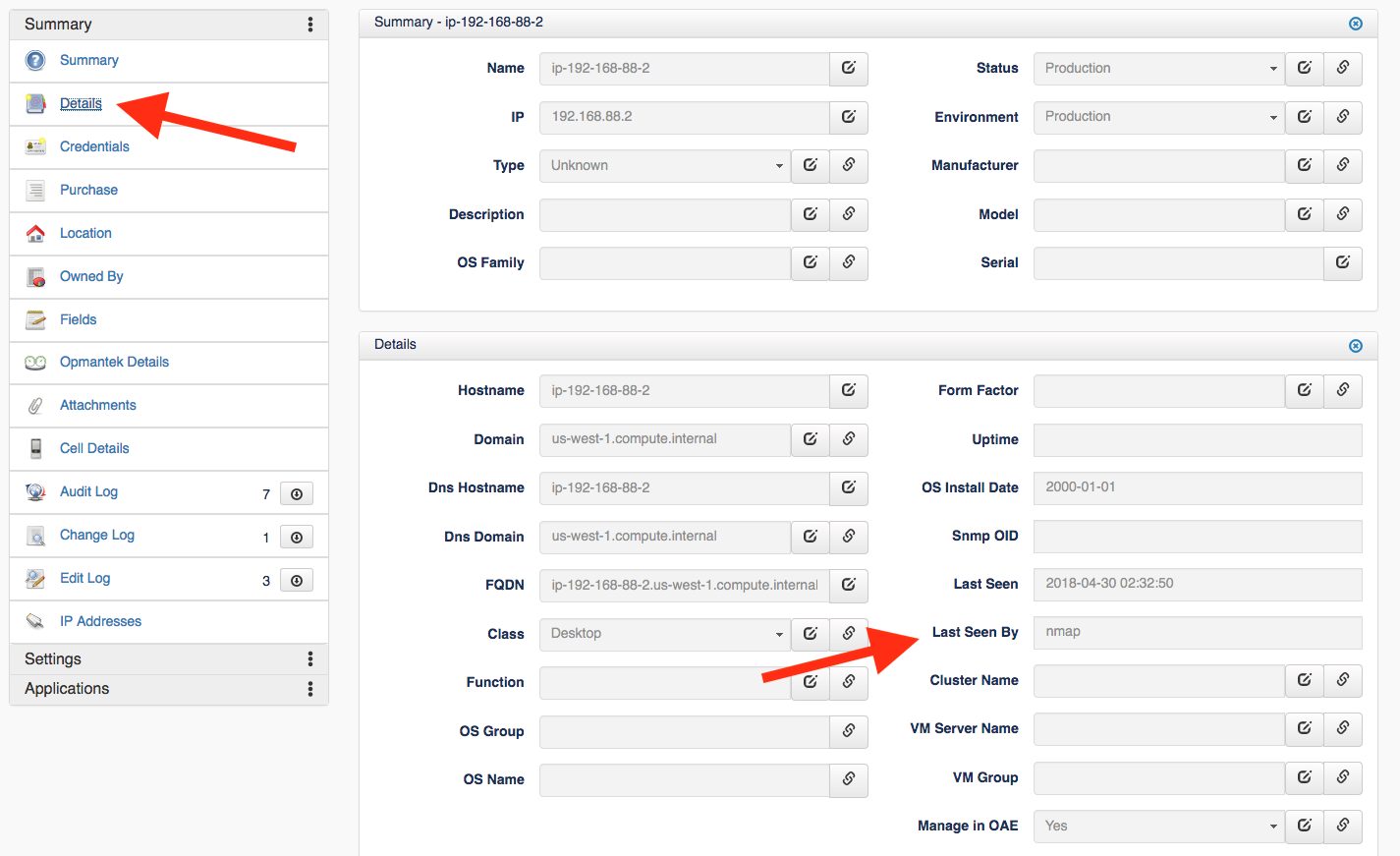The device discovery and auditing function of Open-AudIT is designed to work "out of the box" as much as possible with the default settings. However, each user's environment is different and sometimes adjustments to Open-AudIT's configuration, network security settings, or credential sets need to be completed in order for accurate audits to complete.
This guide will walk you through troubleshooting the most common problems reported by Open-AudIT users.
Problems Starting Your First Audit
If you are having trouble getting your first audit started, it is best to attempt to audit a single, known machine with proper credentials before moving on to full subnets of devices. Start with this guide below on how to audit a single machine.
First, make sure you've configured your devices properly: Target Client Configuration
Next, run a discovery on a single device (not on a subnet) to help identify and focus troubleshooting efforts: How to discover a single Device
Limited Data Returning From Audit
Step 1 - First, determine if a detailed audit is being completed or only the initial results of the NMAP scan. The easiest way to do this is to run a Device report; select Report -> Hardware -> Device from the Open-AudIT menu, then select the device by clicking the blue View button in the left-hand column of the report. This will display the Device Details screen.
Step 2 - Now, click Details from the menu on the left under Summary. This will open the Details on the right side under the Summary panel. You should look for the Last Seen By field, depending on the version of Open-AudIT and type of device this may include NMAP, SNMP, or Audit. If it says NMAP, as the screen shot below, then a full audit has not been completed on this device. The next steps is to determine required ports are open, then if any of the supplied credential set(s) were accepted by the device.
Step 3 - Before continuing you should increase the log-level and rerun the audit on the device. This will give you in-depth debugging information that will help you determine exactly what went wrong during the audit. To adjust the log_level select Admin -> Configuration -> All from the Open-AudIT menu. Find the entry for log_level, which defaults to 5, and increase it to 7. This change will take effect immediately and detailed debug information will be captured during the next audit.
Step 4 - Now that you have adjusted the log_level to 7 and re-run an audit on the device you need to check the Discovery Log to see what happened. First, return to the Device Details screen as you did in Step 1 above. Then, select Discovery Log from the menu on the left. The discovery log, along with other logs and information open up below the Summary panel.
As shown in the image above, this example is using SSH credential set. SSH is typically used on Linux devices, WMI is used by Windows machines, and SNMP is used for network devices, Linux and Windows devices. More information on credentials and configuration can be found here: Target Client Configuration. The first underline in the image above is showing that SSH Status suggesting the SSH port is open. Notice WMI Status is shown as false as well as SNMP, if a device was using those forms of credentials then the Status should be true.
Ensure which ever credential type you are using is displaying the Status as true, otherwise the audit will not successfully complete. The second underlined part of this image is confirming that the credential set is working for this device and then continues below to show that the SSH audit is starting. Check the discovery log for this information after auditing your device to see if the credentials are being accepted with no issues.
Duplicate Devices or Missing Devices
When Open-AudIT receives data about a device, either by discovering the device during an audit run or by the user importing the device, it must determine if this discovered device matches a device that already exists within its database, or if it is a new device that should be added. Open-AudIT uses a series of twelve property matches to determine this.
It is important to note that when Open-AudIT determines a match ALL properties set to 'y' must match exactly in order for Open-AudIT to determine that the discovered device matches a device already in the database. If any of these properties do not match, then a new device entry will be created, which could result in duplicate device entries. In situations where properties are duplicated, for example a dbus_id is copied during a VM clone, then an existing device may incorrectly get overwritten/updated rather then a new entry being created resulting in missing devices.
Guides for adjusting the matching rules are covered in detail HERE: Matching Devices
Discovery Stopped Working
If you are running a RedHat or CentOS system and you have upgraded Nmap or went to a previous version sometimes it is necessary to reset the SUID on the binary. You can do this by running the following command:
chmod u+s /usr/bin/nmap

